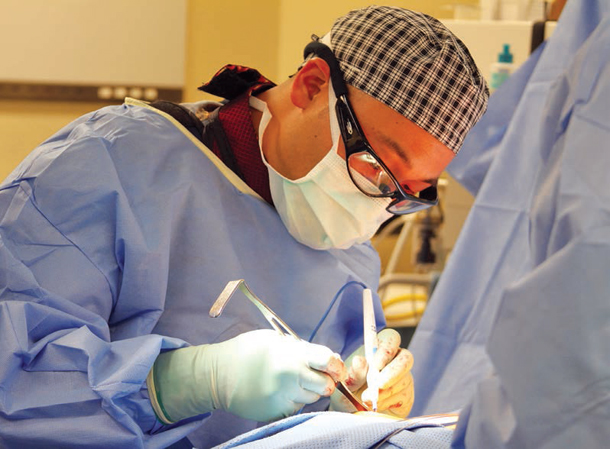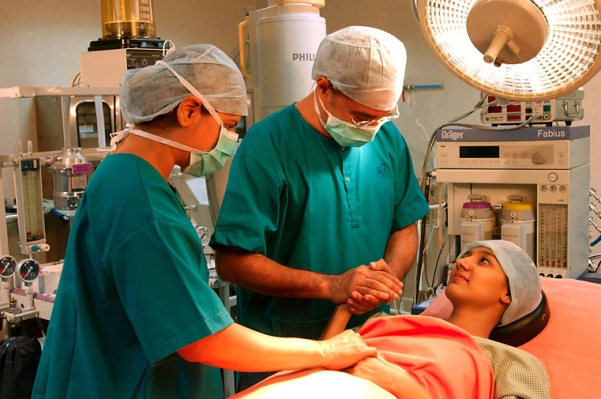A checklist provides a frame work and initiates brief discussion about the case, expected difficulties and plan of action to deal with complication or difficult situations.
In the previous article, we discussed about human factors as one of the most important reasons for errors. An individual is aware of his/her immediate surroundings but not about the larger surroundings. This is called as “situational awareness”.
A person may do his/her job diligently, but when it comes to synchronous activity of different departments or different persons there is always a potential for error. When two people with different background information start functioning together, there is bound to be a gap. When few actions, having no logical sequence, have to be done in synchronized manners, the chance of something getting missed is high. Think of a memory test where few different objects are flashed in front of you and you are asked to memories them. It is a high possibility that you may forget some of them, if not, you will not recollect them in the same order!
When checklists come into play
Checklists find their way in such situations. Actually checklist is not a new concept at all. Do we not make a “To Do list”? However, the institutionalization of the checklist has an interesting history. In 1935, U.S. Military had organized an exhibition cum-competition for aircraft manufacturers. Boeing, the famous aircraft manufacturer was also in the competition. Model 299 of Boeing was very advanced and could carry five times more bombs than expected by the US military. The competition was a mere formality by Boeing. Major Hill, a very experienced pilot and trainer was given the job to fly the aircraft on that day. Model 299 took off smartly. The aircraft reached the height of around 300 feet height and suddenly tilted to one side. Within few seconds it collapsed to the ground and caught fire. Major Hill lost his life. After this unexpected accident, a fact finding committee was constituted. The committee concluded that there was no technical fault in the aircraft. The pilot was at fault! How could an experienced pilot commit such a blunder? That took a blunder that could cost his own life? Later, it was realized that the systems of the aircraft were quite complicated. Actually, the pilot was supposed to perform a number of tasks within a small period of time in a synchronous manner. And Major Hill had simply forgotten to perform one out of them! Continue reading

 Today’s medicine is like a double edged sword, it can benefit but also harm
Today’s medicine is like a double edged sword, it can benefit but also harm Richie Williams was young boy of 12. He was suffering from leukemia (blood cancer) and was undergoing treatment at the Great Ormand Street Children’s Hospital which specialised in treating such patients. Richie used to receive anti-cancer medicines in a cyclical manner. He used to go to the hospital on a pre-scheduled day to receive his dose of chemotherapy. They used to give him a dose of injection Vincristine by intravenous route. Another dose of injection methotrexate would be injected intra-thecally (injection between the spaces in the back bone, typically called as spinal injection). Being young, Richie used to get a small dose of sedative first and then the spinal injection would be given to him. He was doing well and recovering fast. In fact, he was almost at the end of the chemotherapy regime.
Richie Williams was young boy of 12. He was suffering from leukemia (blood cancer) and was undergoing treatment at the Great Ormand Street Children’s Hospital which specialised in treating such patients. Richie used to receive anti-cancer medicines in a cyclical manner. He used to go to the hospital on a pre-scheduled day to receive his dose of chemotherapy. They used to give him a dose of injection Vincristine by intravenous route. Another dose of injection methotrexate would be injected intra-thecally (injection between the spaces in the back bone, typically called as spinal injection). Being young, Richie used to get a small dose of sedative first and then the spinal injection would be given to him. He was doing well and recovering fast. In fact, he was almost at the end of the chemotherapy regime. A message that goes in rounds on social networking sites reads as under:
A message that goes in rounds on social networking sites reads as under: Everything went wrong in my surgery. I went through a horrible experience. No one, not even your enemy should go through such an experience ever. But I know for sure, the doctors were not negligent.
Everything went wrong in my surgery. I went through a horrible experience. No one, not even your enemy should go through such an experience ever. But I know for sure, the doctors were not negligent.